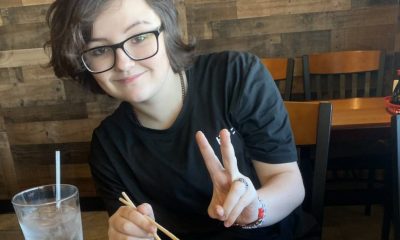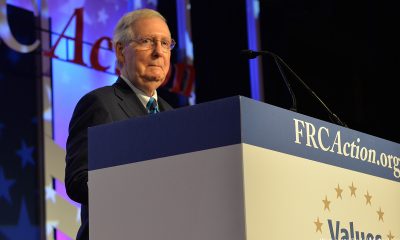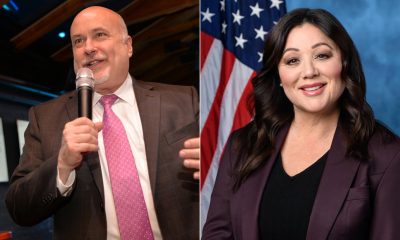National
‘Don’t Ask, Don’t Tell’ comes to an end
Burden on gay, lesbian service members lifted Tuesday
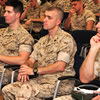
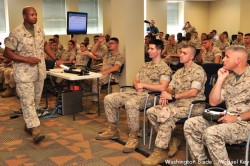
An estimated 2 million U.S. service members were trained on gay-related issues in the run-up to next Tuesday’s lifting of the military’s gay ban. (Washington Blade file photo by Michael Key)
As gay and lesbian troops await the end of the 18-year-old ban on openly gay service members on Tuesday, observers say the change will have significant impact beyond the military.
“Don’t Ask, Don’t Tell” will finally be lifted from the books thanks to the certification of repeal that President Obama, Defense Secretary Leon Panetta and Chairman of the Joint Chiefs of Staff Adm. Mike Mullen sent to Congress on July 22. In accordance with the repeal law that President Obama signed in December, certification started a 60-day timeclock for the end of the ban on Sept. 20.
Aaron Belkin, author of “How We Won,” a book on the lessons learned for progressive causes resulting from “Don’t Ask, Don’t Tell” repeal, said the end of the military’s gay ban represents the end of what he called the “political paranoia” that led to the institution of the law in 1993.
“Just abstracting away from the question of LGBT rights that’s a danger to every American citizen,” Belkin said. “Sept. 20 is about the cultural change for the military and the political change for gay and lesbian troops … but I would say, even more importantly, it’s a moment when truth and fairness trumped paranoia, and that’s just critical.”
Jeff Krehely, director of the LGBT research and communications project at the Center for American Progress, said allowing open service will be significant for many Americans.
“‘Don’t Ask, Don’t Tell’ repeal is huge and tremendous, but I think there are much larger implications for society because a lot of people really respect the military,” Krehely said.
Observers agree the process that led to the end of “Don’t Ask, Don’t Tell” will have a lasting impact as well.
Alex Nicholson, executive director of Servicemembers United, said the training in which service members have been participating will have significant influence on the perspective with which troops — and the American public at large — view gay and lesbian people.
“They really took the time to train and educate the force on the various assets of this policy and hypotheticals,” Nicholson said. “It was an hour of instruction on gays and lesbians, on gay families, on gay partners and it was a really a normalization routine. It was really exposed to millions of America’s most conservative youth to the normality of gays and lesbians.”
Among the situations that the training addressed, Nicholson said, were gay troops holding hands, going on dates or participating in military events with their partners. Nearly 2 million service members received the “Don’t Ask, Don’t Tell” training before certification took place on July 22, according to the Pentagon.
Workplace discrimination against LGBT people could be an issue that gains new focus after “Don’t Ask, Don’t Tell” repeal. No federal law exists to protect LGBT workers against discrimination. Firing someone for being gay is legal in 29 states and firing someone for being transgender is legal in 35 states.
Krehely said open service could generate support for the Employment Non-Discrimination Act, which would prohibit discrimination against LGBT workers in most situations in the public and private workforce, or encourage other employers to add protections for LGBT workers.
“The military is probably one of the biggest and most visible workplaces in our country,” Krehely said. “I think Sept. 20 is a clear indication that this discrimination should not be there any longer, and that we need to move forward on ENDA, and educate people about the broader workplace issues that we’re up against.”
Despite the potential for long-term impact, advocates say the change resulting in the end of “Don’t Ask, Don’t Tell” won’t be immediately apparent and any impact of any lifting the gay ban will be more drawn out.
Krehely said the end of “Don’t Ask, Don’t Tell” next week won’t mean the “world changes necessarily” on Tuesday.
“I think that it’s just people who want to serve their country will want to do that without living in fear,” Krehely said. “That’s the biggest change. It may not be visible, but it’s really important to those people and it’s really important to the military itself.”
Nicholson predicted Tuesday will be a “non-event” and said many gay service members will choose not to come out even though they won’t be in danger of dismissal now that the military’s gay ban is off the books.
“I think you’ll see a good number of them who decide not to come out,” Nicholson said. “I think the post-repeal military is going to resemble any conservative American workplace where individuals judge their willingness and their comfort level in coming out.”
According to the most recent findings from the Williams Institute at the University of California in Los Angeles, an estimated 48,500 lesbians, gay men and bisexuals serve on active duty or in the ready reserve in the U.S. military, while an additional 22,000 are in standby and retired reserve forces. These 70,500 service members make up 2.2 percent of the total force.
But what will happen to those service members who choose to be public about their sexual orientation? Will service members patronize their local gay bars while in uniform? Will Pride parades include contingents of openly gay troops?
Some gay troops have already started brandishing their military credentials during Pride celebrations. In July, about 200 active-duty troops and veterans marched in San Diego’s Pride parade. They weren’t wearing uniforms, but T-shirts indicating their branch of service. The event was the first time a military contingent participated in a Pride celebration in the United States.
Nicholson said that the standards that apply to straight service members with regard to uniforms will also apply to gay troops — so wearing the uniform may not be appropriate in some circumstances.
“Unless it’s some unusual circumstances, service members don’t wear their uniforms out to the bar,” Nicholson said. “I can pretty much guarantee that violations of long-standing and well-understood regulations like that for the sake of publicity is going to be frowned upon by gay troops because the community consensus is they want to blend in like everyone else and not have any special treatment.”
Nonetheless, gay troops will undoubtedly be visible in the post-repeal world. Belkin said the higher visibility of gay troops — and their relationships — following the end of “Don’t Ask, Don’t Tell” will add to the political pressure to advance the fight for same-sex marriage.
“We’re going to see gay and lesbian service members coming back from the Middle East and talking about the importance of marriage equality, and, very tragically, we’re going to see gay and lesbian service members fall in the battlefield and their partners, husbands and wives will not be dealt any benefits their straight counterparts have,” Belkin said. “That is going to illustrate for the public in a much more vivid way the stakes of the marriage debate.”
What’s the next frontier for those who worked to repeal “Don’t Ask, Don’t Tell?” Securing benefits for gay and lesbian troops is the next step advocates plan to take after the gay ban is lifted from the books.
The Defense of Marriage Act, which prohibits federal recognition of same-sex marriage, prevents the military from offering benefits to gay troops, such as health care benefits. But other benefits related to housing and legal services could be changed administratively.
Krehely said benefits for gay troops will be among the issues advocacy groups will be pushing for in the post-repeal world.
“I think that there are still some implementation issues that need to be worked out in terms of benefits and housing, and I think that’s something advocacy organizations and research groups are going to keep trying to make some progress on,” Krehely said.
Federal Government
Lambda Legal praises Biden-Harris administration’s finalized Title IX regulations
New rules to take effect Aug. 1

The Biden-Harris administration’s revised Title IX policy “protects LGBTQ+ students from discrimination and other abuse,” Lambda Legal said in a statement praising the U.S. Department of Education’s issuance of the final rule on Friday.
Slated to take effect on Aug. 1, the new regulations constitute an expansion of the 1972 Title IX civil rights law, which prohibits sex-based discrimination in education programs that receive federal funding.
Pursuant to the U.S. Supreme Court’s ruling in the landmark 2020 Bostock v. Clayton County case, the department’s revised policy clarifies that discrimination on the basis of sexual orientation and gender identity constitutes sex-based discrimination as defined under the law.
“These regulations make it crystal clear that everyone can access schools that are safe, welcoming and that respect their rights,” Education Secretary Miguel Cardona said during a call with reporters on Thursday.
While the new rule does not provide guidance on whether schools must allow transgender students to play on sports teams corresponding with their gender identity to comply with Title IX, the question is addressed in a separate rule proposed by the agency in April.
The administration’s new policy also reverses some Trump-era Title IX rules governing how schools must respond to reports of sexual harassment and sexual assault, which were widely seen as imbalanced in favor of the accused.
Jennifer Klein, the director of the White House Gender Policy Council, said during Thursday’s call that the department sought to strike a balance with respect to these issues, “reaffirming our longstanding commitment to fundamental fairness.”
“We applaud the Biden administration’s action to rescind the legally unsound, cruel, and dangerous sexual harassment and assault rule of the previous administration,” Lambda Legal Nonbinary and Transgender Rights Project Director Sasha Buchert said in the group’s statement on Friday.
“Today’s rule instead appropriately underscores that Title IX’s civil rights protections clearly cover LGBTQ+ students, as well as survivors and pregnant and parenting students across race and gender identity,” she said. “Schools must be places where students can learn and thrive free of harassment, discrimination, and other abuse.”
Michigan
Mich. Democrats spar over LGBTQ-inclusive hate crimes law
Lawmakers disagree on just what kind of statute to pass
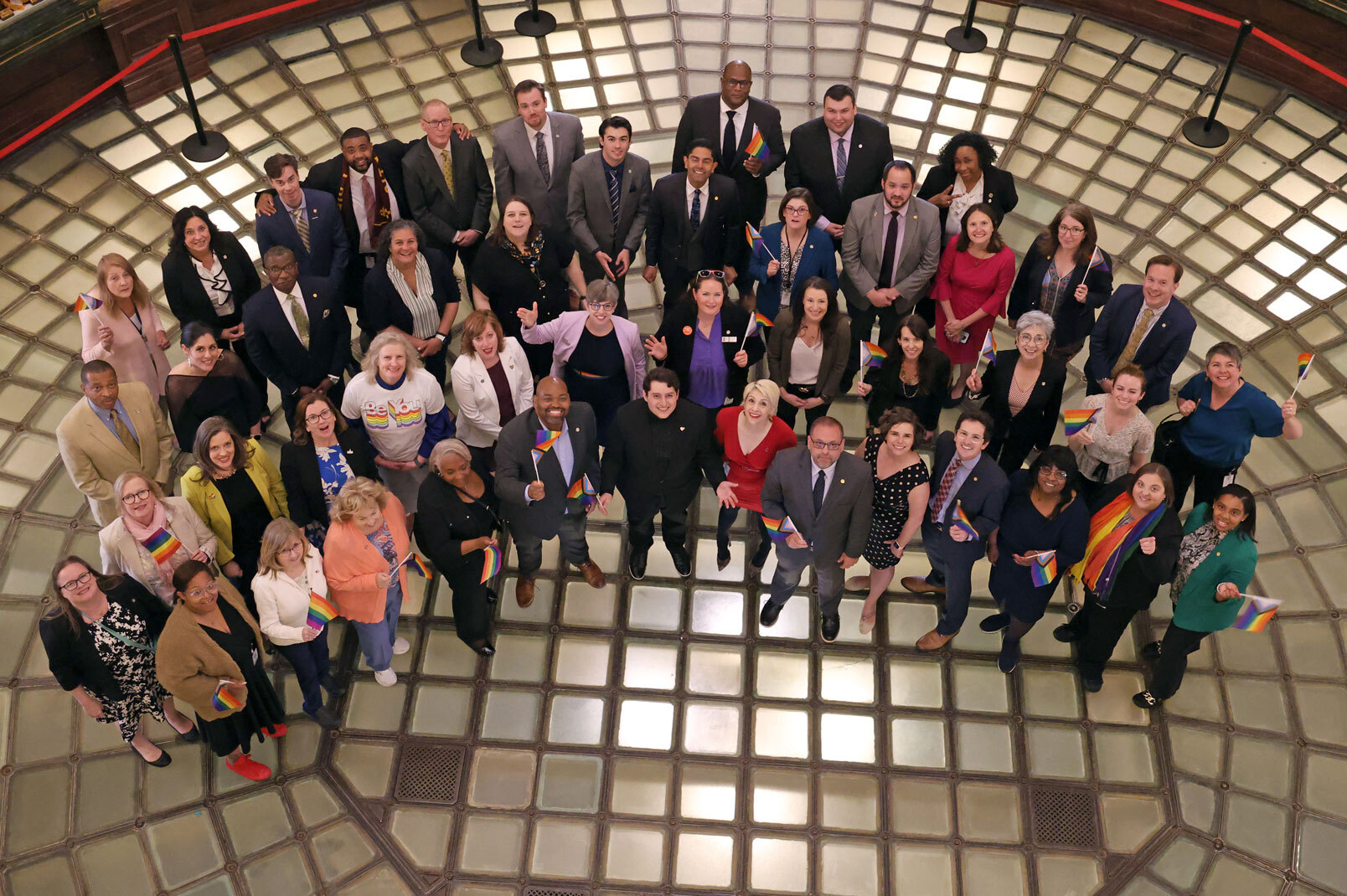
Michigan could soon become the latest state to pass an LGBTQ-inclusive hate crime law, but the state’s Democratic lawmakers disagree on just what kind of law they should pass.
Currently, Michigan’s Ethnic Intimidation Act only offers limited protections to victims of crime motivated by their “race, color, religion, gender, or national origin.” Bills proposed by Democratic lawmakers expand the list to include “actual or perceived race, color, religion, gender, sexual orientation, gender identity or expression, ethnicity, physical or mental disability, age, national origin, or association or affiliation with any such individuals.”
Democratic Gov. Gretchen Whitmer and Attorney General Dana Nessel have both advocated for a hate crime law, but house and senate Democrats have each passed different hate crimes packages, and Nessel has blasted both as being too weak.
Under the house proposal that passed last year (House Bill 4474), a first offense would be punishable with a $2,000 fine, up to two years in prison, or both. Penalties double for a second offense, and if a gun or other dangerous weapons is involved, the maximum penalty is six years in prison and a fine of $7,500.
But that proposal stalled when it reached the senate, after far-right news outlets and Fox News reported misinformation that the bill only protected LGBTQ people and would make misgendering a trans person a crime. State Rep. Noah Arbit, the bill’s sponsor, was also made the subject of a recall effort, which ultimately failed.
Arbit submitted a new version of the bill (House Bill 5288) that added sections clarifying that misgendering a person, “intentionally or unintentionally” is not a hate crime, although the latest version (House Bill 5400) of the bill omits this language.
That bill has since stalled in a house committee, in part because the Democrats lost their house majority last November, when two Democratic representatives resigned after being elected mayors. The Democrats regained their house majority last night by winning two special elections.
Meanwhile, the senate passed a different package of hate crime bills sponsored by state Sen. Sylvia Santana (Senate Bill 600) in March that includes much lighter sentences, as well as a clause ensuring that misgendering a person is not a hate crime.
Under the senate bill, if the first offense is only a threat, it would be a misdemeanor punishable by one year in prison and up to $1,000 fine. A subsequent offense or first violent hate crime, including stalking, would be a felony that attracts double the punishment.
Multiple calls and emails from the Washington Blade to both Arbit and Santana requesting comment on the bills for this story went unanswered.
The attorney general’s office sent a statement to the Blade supporting stronger hate crime legislation.
“As a career prosecutor, [Nessel] has seen firsthand how the state’s weak Ethnic Intimidation Act (not updated since the late 1980’s) does not allow for meaningful law enforcement and court intervention before threats become violent and deadly, nor does it consider significant bases for bias. It is our hope that the legislature will pass robust, much-needed updates to this statute,” the statement says.
But Nessel, who has herself been the victim of racially motivated threats, has also blasted all of the bills presented by Democrats as not going far enough.
“Two years is nothing … Why not just give them a parking ticket?” Nessel told Bridge Michigan.
Nessel blames a bizarre alliance far-right and far-left forces that have doomed tougher laws.
“You have this confluence of forces on the far right … this insistence that the First Amendment protects this language, or that the Second Amendment protects the ability to possess firearms under almost any and all circumstances,” Nessel said. “But then you also have the far left that argues basically no one should go to jail or prison for any offense ever.”
The legislature did manage to pass an “institutional desecration” law last year that penalizes hate-motivated vandalism to churches, schools, museums, and community centers, and is LGBTQ-inclusive.
According to data from the U.S. Department of Justice, reported hate crime incidents have been skyrocketing, with attacks motivated by sexual orientation surging by 70 percent from 2020 to 2022, the last year for which data is available.
Twenty-two states, D.C., Puerto Rico, and the U.S. Virgin Islands have passed LGBTQ-inclusive hate crime laws. Another 11 states have hate crime laws that include protections for “sexual orientation” but not “gender identity.”
Michigan Democrats have advanced several key LGBTQ rights priorities since they took unified control of the legislature in 2023. A long-stalled comprehensive anti-discrimination law was passed last year, as did a conversion therapy ban. Last month the legislature updated family law to make surrogacy easier for all couples, including same-sex couples.
A bill to ban the “gay panic” defense has passed the state house and was due for a Senate committee hearing on Wednesday.
Indiana
Drag queen announces run for mayor of Ind. city
Branden Blaettne seeking Fort Wayne’s top office

In a Facebook post Tuesday, a local drag personality announced he was running for the office of mayor once held by the late Fort Wayne Mayor Tom Henry, who died last month just a few months into his fifth term.
Henry was recently diagnosed with late-stage stomach cancer and experienced an emergency that landed him in hospice care. He died shortly after.
WPTA, a local television station, reported that Fort Wayne resident Branden Blaettne, whose drag name is Della Licious, confirmed he filed paperwork to be one of the candidates seeking to finish out the fifth term of the late mayor.
Blaettner, who is a community organizer, told WPTA he doesn’t want to “get Fort Wayne back on track,” but rather keep the momentum started by Henry going while giving a platform to the disenfranchised groups in the community. Blaettner said he doesn’t think his local fame as a drag queen will hold him back.
“It’s easy to have a platform when you wear platform heels,” Blaettner told WPTA. “The status quo has left a lot of people out in the cold — both figuratively and literally,” Blaettner added.
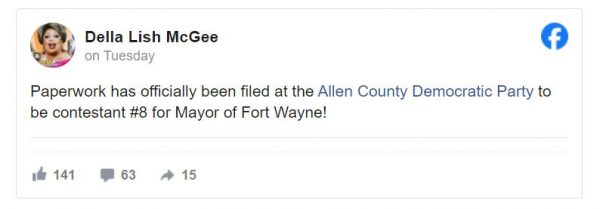
The Indiana Capital Chronicle reported that state Rep. Phil GiaQuinta, who has led the Indiana House Democratic caucus since 2018, has added his name to a growing list of Fort Wayne politicos who want to be the city’s next mayor. A caucus of precinct committee persons will choose the new mayor.
According to the Fort Wayne Journal Gazette, the deadline for residents to file candidacy was 10:30 a.m. on Wednesday. A town hall with the candidates is scheduled for 6 p.m. on Thursday at Franklin School Park. The caucus is set for 10:30 a.m. on April 20 at the Lincoln Financial Event Center at Parkview Field.
At least six candidates so far have announced they will run in the caucus. They include Branden Blaettne, GiaQuinta, City Councilwoman Michelle Chambers, City Councilwoman Sharon Tucker, former city- and county-council candidate Palermo Galindo, and 2023 Democratic primary mayoral candidate Jorge Fernandez.
-
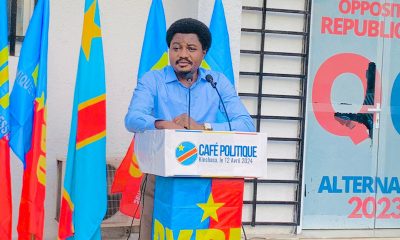
 Africa5 days ago
Africa5 days agoCongolese lawmaker introduces anti-homosexuality bill
-
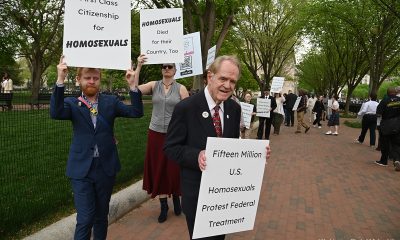
 District of Columbia2 days ago
District of Columbia2 days agoReenactment of first gay rights picket at White House draws interest of tourists
-
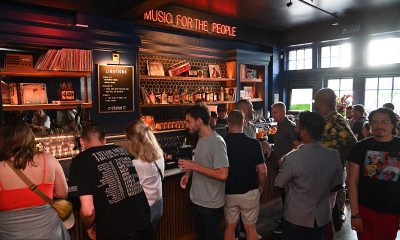
 District of Columbia1 day ago
District of Columbia1 day agoNew D.C. LGBTQ+ bar Crush set to open April 19
-
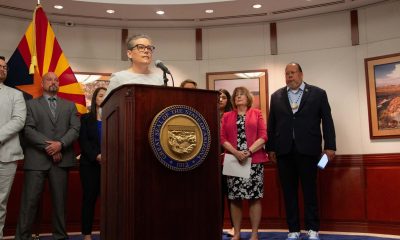
 Arizona2 days ago
Arizona2 days agoAriz. governor vetoes anti-transgender, Ten Commandments bill

